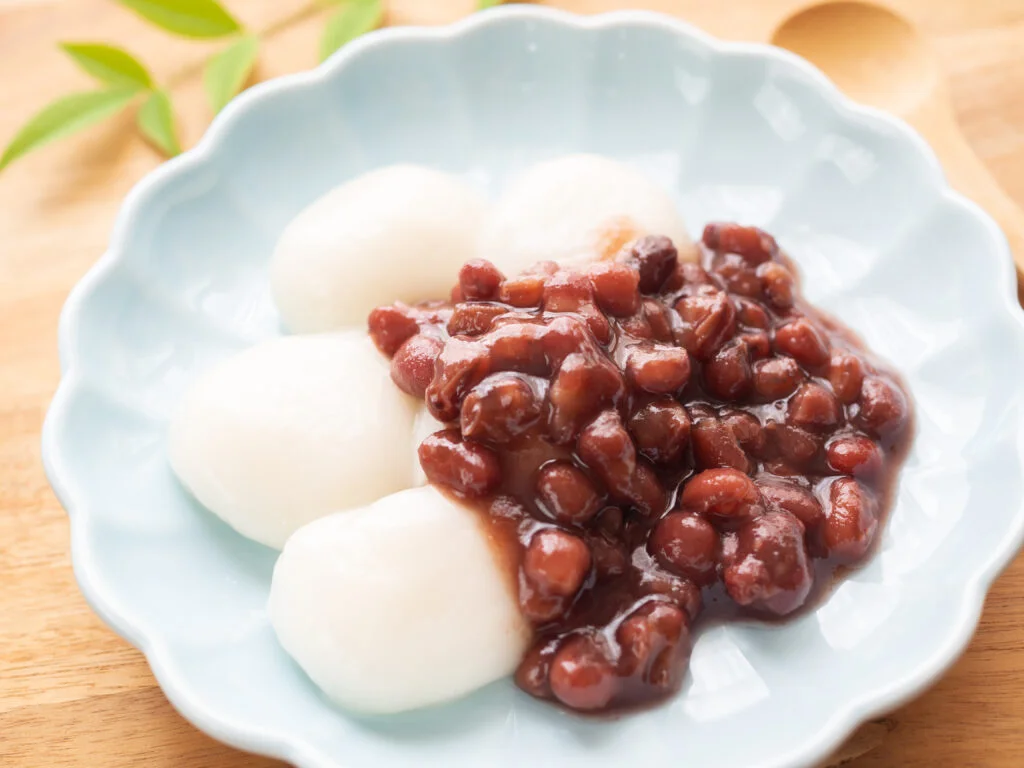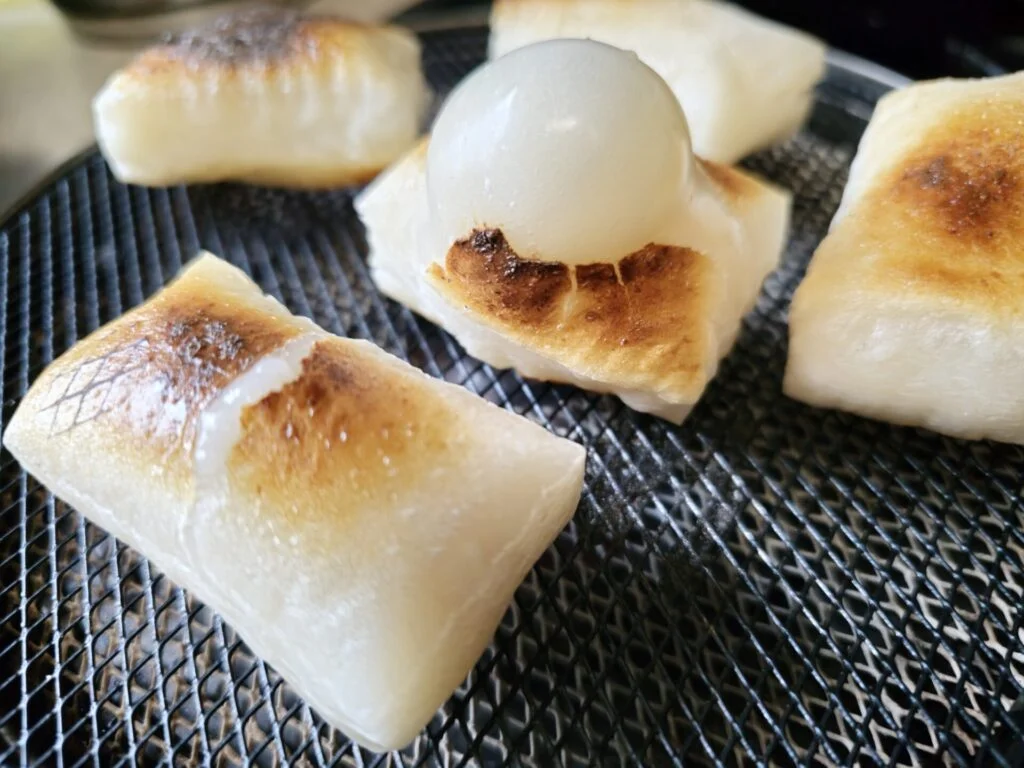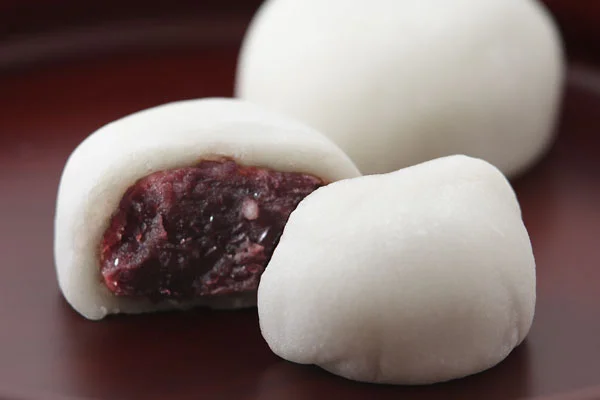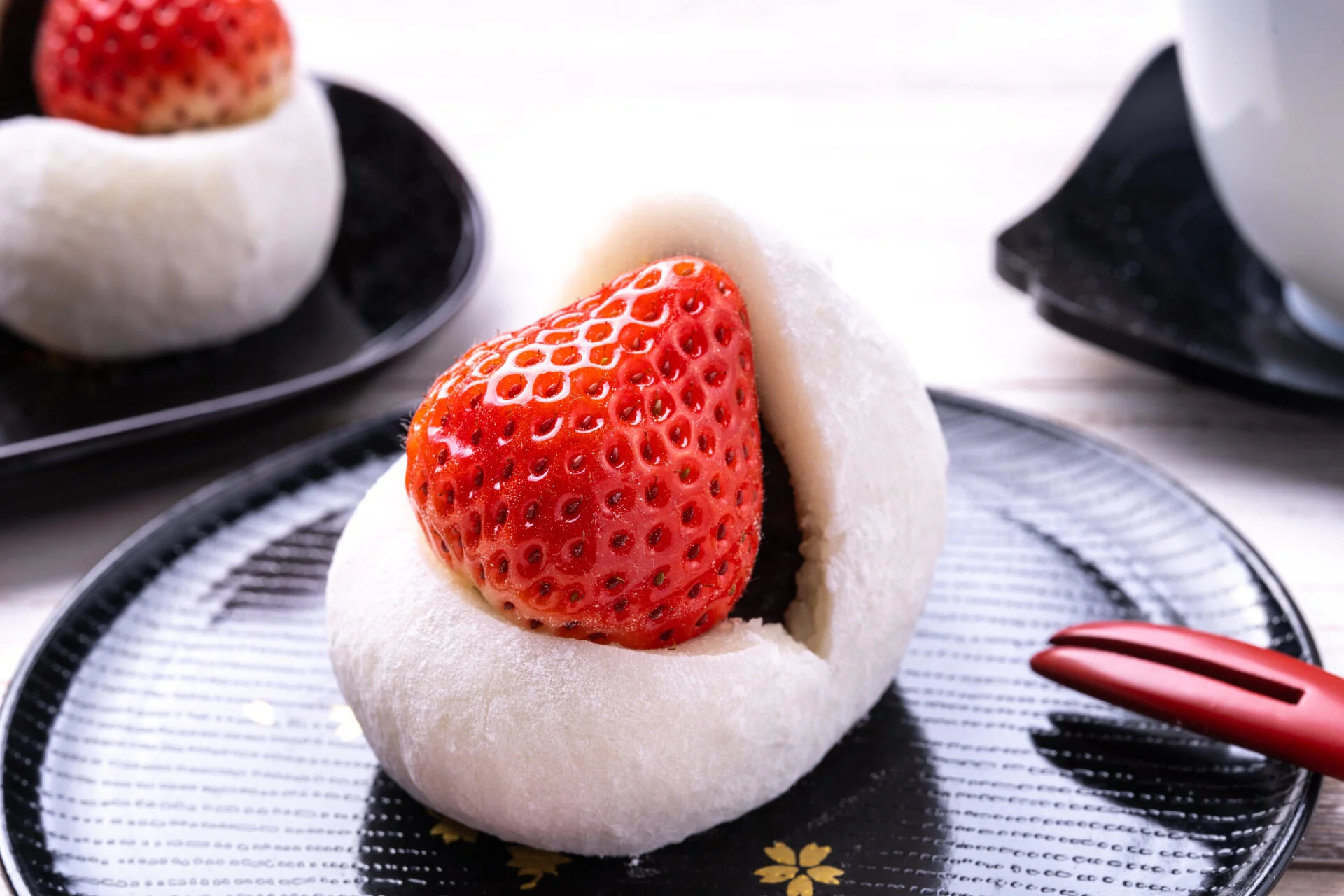Mochi vs Gyuhi: Unraveling the Mystery of Japanese ‘Mochi’ Abroad and the Depth of Wagashi
In the world of Japanese confectionery, there are two ingredients that look similar but are entirely different: “mochi” and “gyuhi”. Particularly abroad, “Mochi” has gained popularity, but interestingly, most of these products are actually what the Japanese call “gyuhi”. Let’s delve into the differences between these two ingredients and explore the depth of wagashi (Japanese sweets).
The Truth Behind the Popular “Mochi” Abroad
In recent years, Japanese “Mochi” has become incredibly popular overseas. Products like “Mochi Ice Cream” and various flavored “Mochi Balls” have become staple items in supermarkets and dessert shops. However, most of these are not what the Japanese consider “mochi”, but rather “gyuhi”. So, what’s the difference between mochi and gyuhi?
Mochi and Gyuhi: Similar Yet Different Basic Ingredients in Japanese Sweets
While mochi and gyuhi may look and feel similar, their ingredients and production methods are entirely different.
Mochi is made by steaming glutinous rice and then pounding it in a mortar. It has a chewy texture with a strong elasticity and is deeply rooted in traditional Japanese food culture.
On the other hand, gyuhi is made by kneading powdered glutinous rice or shiratamako (Glutinous rice flour) with mizuame (starch syrup), water, or sugar, and then steaming it. It has a soft, moist texture and is an essential ingredient in many wagashi.

The preservation qualities also differ; mochi tends to harden over time, while gyuhi stays soft for longer. This is why gyuhi, being easier to distribute as a product, has become the star of the “Mochi” boom overseas.
| Characteristic | Gyuhi | Mochi |
|---|---|---|
| Main Ingredient | Glutinous rice flour (shiratamako or mochiko), sugar, starch syrup | Glutinous rice |
| Production Method | Kneading glutinous rice flour with sugar and starch syrup, then steaming | Steaming glutinous rice and pounding it in a mortar to develop stickiness |
| Texture | Soft and moist | Chewy with strong elasticity |
| Uses | Ingredient in wagashi (e.g., daifuku mochi), wrapping for ice cream | Traditional Japanese foods and sweets (e.g., kagami mochi, ozoni, kusamochi, sekihan) |
| Shelf Life | Relatively long-lasting | Tends to harden over time |
| Flavor | Strong sweetness | Natural flavor of glutinous rice |
| Cultural Background | Mainly used in wagashi, popular abroad as “Mochi” | Deeply rooted in traditional Japanese food culture |
| Shape | Small balls or thin sheets | Various shapes including round and square mochi |
| Cooking Method | Steamed and kneaded | Steamed and pounded |
The World of Mochi: A Symbol of Japanese Tradition and Culture
Mochi is deeply ingrained in Japanese food culture. Its history dates back to the Jomon period. It’s an indispensable food for New Year celebrations, displayed as “kagami mochi” or eaten in “ozoni” soup.
The traditional method of making mochi, where steamed glutinous rice is pounded in a mortar, still exists today. This process, called “mochitsuki”, is often enjoyed as a community event.
Mochi is not only used in wagashi but also enjoyed as snacks and light meals. Variations like kinako mochi (soybean flour mochi), anko mochi (red bean paste mochi), and isobe mochi (seaweed-wrapped mochi) are popular. Mochi is also an essential component in wagashi enjoyed with sencha tea.

The Charm of Gyuhi: A Unique Texture in Japanese Sweets
Gyuhi is an essential ingredient in wagashi. Its soft and moist texture has captivated many people.
The history of gyuhi dates back to the Heian period. It’s believed to have been introduced from China. Initially, it was made from brown rice and sweetened with brown sugar, resulting in a black color. The name “gyuhi” (meaning “cow hide”) is said to have come from its resemblance to tanned cowhide. Over time, the production methods and ingredients evolved, and today gyuhi is a crucial component in wagashi, known for its beautiful white color and unique texture.
Modern gyuhi is made by kneading powdered glutinous rice or shiratamako with mizuame, water, or sugar, and then steaming it. This process creates gyuhi’s characteristic soft, moist texture and appropriate stickiness. Adding sugar also enhances its sweetness and preservability.
Representative gyuhi sweets include daifuku and sakura mochi. Daifuku, where anko (sweet red bean paste) is wrapped in gyuhi, is a classic wagashi loved by many for its soft texture and moderate sweetness.
The unique texture of gyuhi has brought new charm to wagashi. While it lacks the elasticity of mochi, its smooth and moist texture is prized, especially in delicate sweets served during tea ceremonies.
Furthermore, gyuhi can be easily shaped, allowing wagashi artisans to create various forms to match seasons and events, resulting in beautiful seasonal wagashi.

The Truth About Daifuku: Mochi or Gyuhi?
Many people think daifuku is a “mochi sweet”, but it actually uses gyuhi. Why is gyuhi used for daifuku?
The reason lies in the properties of gyuhi. Compared to mochi, gyuhi is softer and can be preserved for longer. It also has the right stickiness to wrap around anko. These characteristics enhance the value of daifuku as a product.
Moreover, gyuhi has a milder taste compared to mochi, which helps to highlight the flavor of the anko filling.
The Art of Using Mochi and Gyuhi: The Skill and Wisdom of Wagashi Artisans
Wagashi artisans use mochi and gyuhi according to their specific characteristics.
For example, mochi is used in traditional dishes like ozoni and gohei mochi. This is because the strong elasticity and chewiness of mochi are suitable for these dishes.
On the other hand, gyuhi is used in sweets like daifuku, sakura mochi, and kashiwa mochi made with domyoji powder. For these wagashi, the softness and preservability of gyuhi are important.
In this way, wagashi artisans deeply understand the characteristics of the ingredients and select the optimal material for each sweet.
Conclusion: Savoring the Depth of Wagashi
Understanding the difference between mochi and gyuhi allows us to appreciate the depth of wagashi even more. These two ingredients, which may look similar at first glance, actually have completely different characteristics, each used to its best advantage.
The fact that many “Mochi” products popular overseas are actually gyuhi is a testament to how the appeal of wagashi has spread beyond Japan’s borders.
The next time you enjoy wagashi, try to be conscious of whether it’s mochi or gyuhi. You’ll likely find that your world of wagashi appreciation expands even further.
